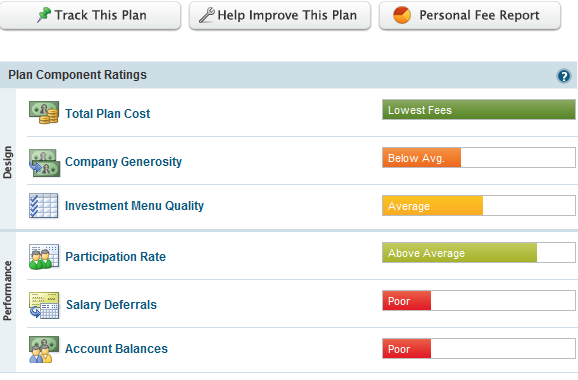Are You Paying Too Much For Your 401(k) Some Benchmarks
Post on: 9 Апрель, 2015 No Comment

Common Sense on Mutual Funds: New Imperatives for the Intelligent Investor (Photo credit: Wikipedia)
With mutual funds, you can always pay too much.
Over the years, I’ve advised against broker- and agent-sold funds because these salespeople take their cut off the top and through high expense ratios. You have to make up the difference in return to get into the black, which almost never happens.
But the question that always pops up is “how much should I pay for a diversified mutual fund?”
The first answer to that question is easy: Don’t pay a commission, load, “12(b)1″ or “wrap” fee — ever. These charges don’t add value to your purchase. They put you behind the eight ball.
Then you need to look at expense ratios. This is what fund management charges every year — expressed as a percentage of assets under management. The lower this number is, the better.
I recently saw Terrance Odean. a professor at the University of California-Berkeley, weigh in on this subject. I trust Odean because of his great research in the area of investor behavior.
Odean has done a mountain of research on how average investors routinely shoot themselves in the foot. They are overconfident and pay little attention to the corrosive effect of fees. They can do much better if they just stick to passive index funds. Here’s his recommendations for expense ratios:
* U.S. Bond Index Funds. You should be paying 0.20% annually — or less.
* U.S. Stock funds: 0.15% or less.

* International Stock funds: 0.35% or less.
Of course, most people choose funds that may charge 1% annually — or more — so you can see how much you can save.
And you can also do much better than the upper end of Odean’s expense ranges. You can own nearly the entire U.S. stock market in one fund such as the Schwab Total Market Index Fund (SWTSX ) for 0.09% annually.
How important are expenses? The numbers get better over time with lower expense ratios. Say you had $10,000 and it earned 10% annually over 20 years and you were paying 1.5% in annual expenses. At the end of those two decades you’d have about $50,000 before taxes. What if you saved the same amount of money (same return and time period) in a fund charging 0.5%? You’d have nearly $61,000 — an 18 percent difference.
The comparisons are so powerful, yet you don’t even have to do the math. Use the SEC’s fund-expense calculator. Whoever said that math wouldn’t make you rich hasn’t done this kind of subtraction.
John F. Wasik is an investor advocate, journalist, speaker and the author of Keynes’s Way to Wealth. Timeless Investment Lessons from the Great Economist and 13 other books.














